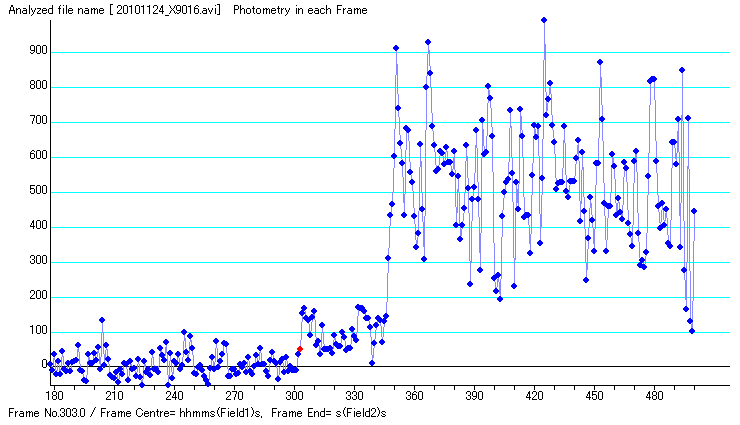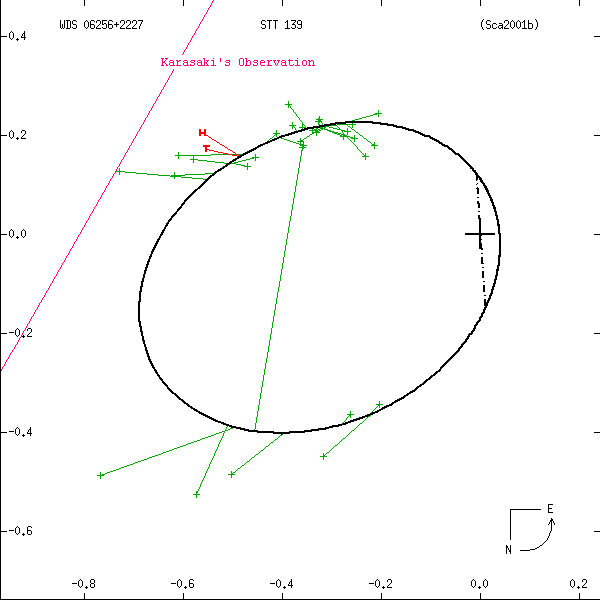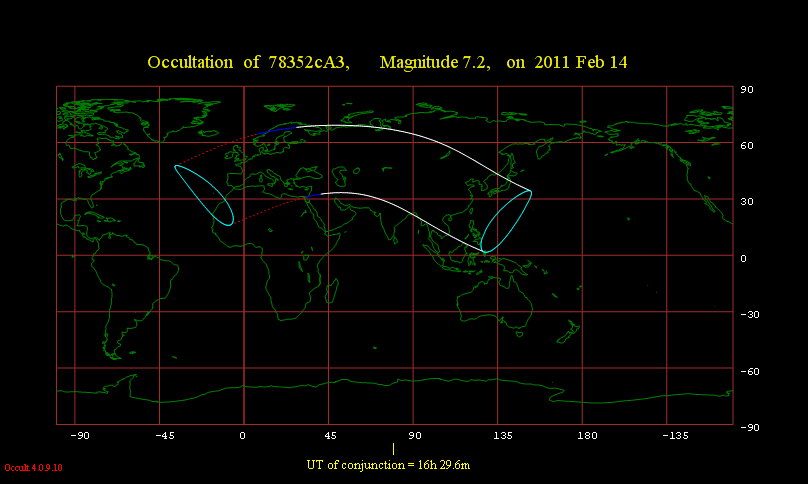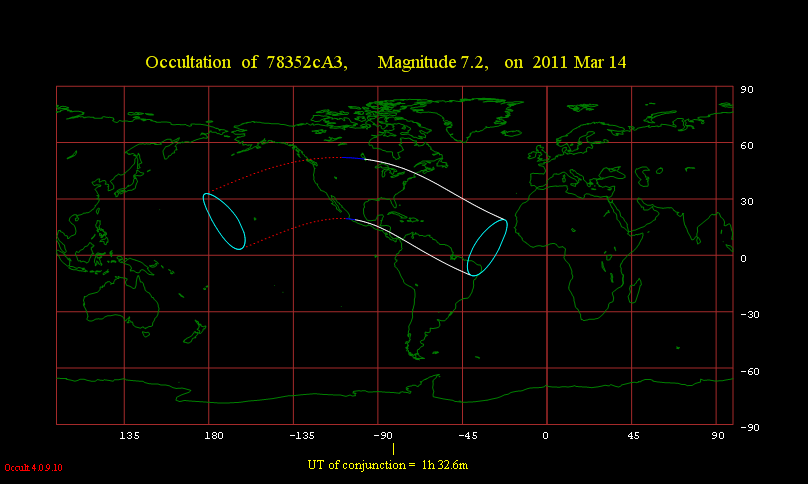Observation and analysis of SAO78352 on Nov. 24, 2010 (UTC)
Dec. 18, 2010
Kazuhisa Miyashita
The occultation event of this star was observed by H. Karasaki on Nov. 24, 2010.
The observed time of step's length is larger than expected.
There are a number of opportunities to re-observe this star coming in the next few months.
Observation of this star is highly desired.
Catalogue details
Catalogue details
XZ 9016 = SAO 78352
RA = 6 25 34.1961 PM = 0.00060s
Dec = 22 27 28.026 PM = -0.0171"
Mv = 7.23, Mb = 0.00, Mr = 0.00 Spectrum A3 Dia: .0000" [Estimated]
Star is the mean position of the following pair
Name Cmpt Yr1 Yr2: PA1 PA2 : Sep1 Sep2 : Mag1 Mag2: #1 #2 mean
STT 139 1843 2008: 313.0 257.0: 0.800 0.700: 7.33 9.38: S 78352 ------ mean
WDS Discoverer codes
STT
Orbital elements
Name Cmpt Period a" i node T e peri
STT 139 360.30000 0.674000 56.6000 183.8000 1929.06000 0.89400 276.3000
Year PA Sep
2008 258.48 0.56
2009 258.83 0.56
2010 259.18 0.57
2011 259.53 0.57
2012 259.87 0.57
|
|---|
Light curve and explanation
Karasaki's observation

The air scintillation on this observation is very large, as you see the
light curve. I analyzed this Karasaki-san's video with PSF tracking and
PSF photometry to reduce the background noise. As a result, a rather
clear step is obtained. Karasaki-san also confirmed it with his analysis.
Comment from IOTA double star coordinator
Brian Loader IOTA double star coordinator says:
Thank you for this observation of S78352 by Karasaki-san. It certainly
looks a clear step, despite the effect of poor seeing.
Using the positions from the orbit as above, the expected step time was
-1.11 seconds. But the data for the double is confused. The WDS shows a
separation of 0.7" at 2008, the interferometric catalog has the lower
separation, 0.57". Using 0.7" instead of 0.57" gives a step of -1.36
seconds, much closer to Karasaki-san's -1.45 seconds.
This is the first observation I have had for this pair. There are a number
of opportunities to re-observe this star coming in the next few months, so
hopefully there may be some more timings.
Orbit and observations

The magenta line indicates range where the faint star exists.
Oppotunity of observation







